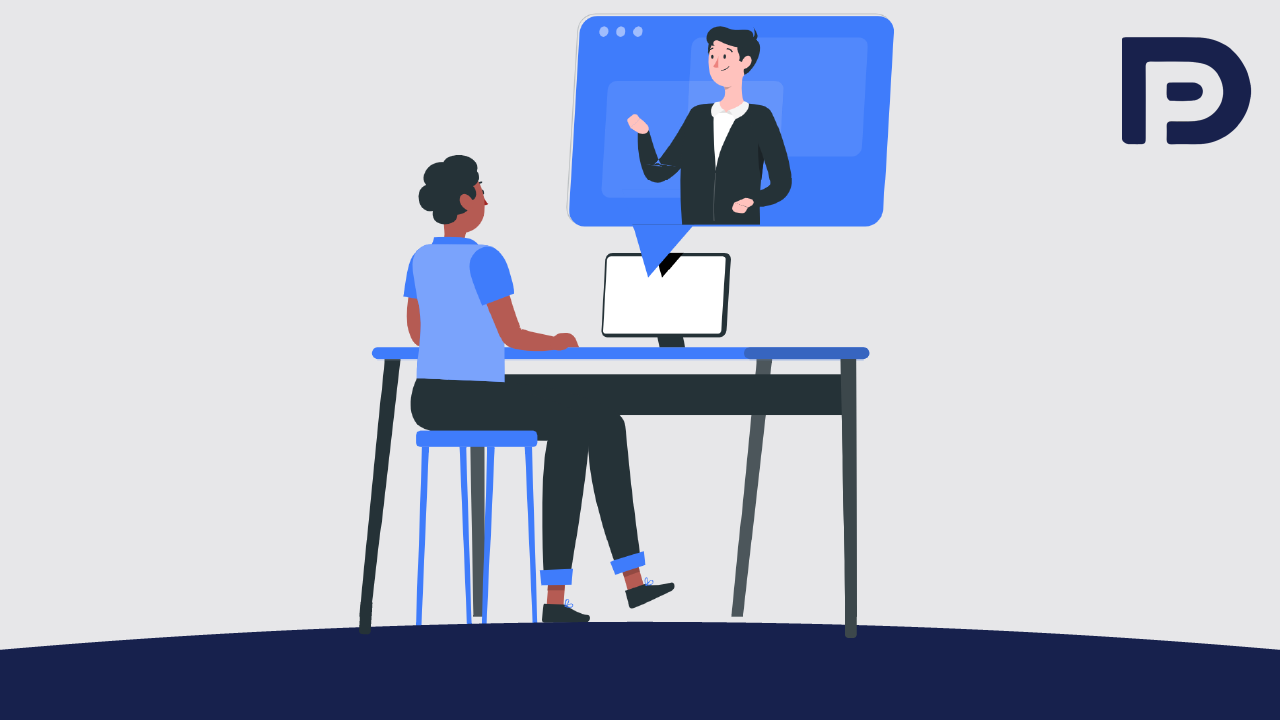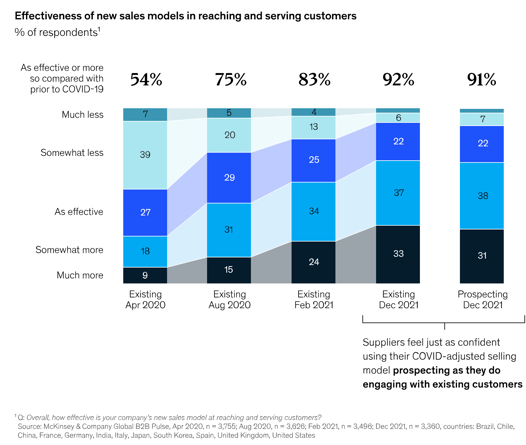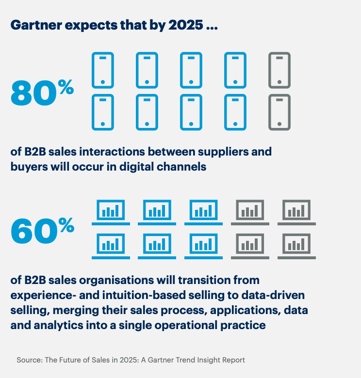NAVIGATING B2B SALES IN A VIRTUAL WORLD

Zoom calls (or your choice of video calling software), where meetings are sat with members around the world, is the new way of buying/selling. It’s weird to think that most deals pre-covid were sealed by a strong handshake, over a table. A real table. Or on a round of golf.
Bit stereotypical, however, the fact that the way we communicate and engage with buyers in our buying processes has turned virtual, poses a difficult dilemma. How do we maintain building rapport and a personable relationship, from laptop to laptop?
Trust is massive in the buying process, especially b2b. It’s the first encounter you get with your potential partner (buyer). Everyone wants to make a good impression, but how do you instil trust and build rapport with a team spread around the world, where the only personal interaction is trying to catch eye contact, via your laptop? On top of this, the software b2b buying process is more experience-led than ever, showing the importance of creating a seamless buying experience.
Organisations buy experiences just as much as an ROI-driven solution.
Virtual videoing software has become incredibly popular and for good reason; selling globally has never been easier. This graph produced by McKinsey & Co depicts the sentiment of selling teams and how well they can serve customers, in this new digital environment.

However, within the buying process, calling isn’t enough to build that trust. Business buyer needs are dynamic, yet the internal sales process is still rigid and is far from being geared towards guiding them through the sales process on their terms and conditions.
So how can you win more often in a digital buying world?
Having ways of engaging your buyer, quickly and easily, builds this trust. Calling plays a huge part in this, but is it enough? Having a place to align key dates, documents and decisions is crucial to not only getting the deal done (on time), but builds a sense of digital transparency. This transparency is what builds trust.
Make sure the buyer knows your process, as soon as possible. This will keep you in control of the deal. It’s these little unspoken processes and tasks that cause deals to slip. When your internal close-date approaches, most buyers haven’t got a clue what’s happening and hence deadlines are pushed; and worst of all, not knowing why. This creates tension and forces the seller to hassle and chase the buyer. Closing the sale and getting the deal done is not the goal of the process. It’s building a relationship and providing value, for years to come.
So, can you do this digitally? YES. I think we probably all know you can because we already are (thanks to COVID). But that’s not to say we’re selling in the best way for our buyers and ultimately, for us.
Digital Sales Rooms will emerge as the Future State of Software buying - having a place where you can engage and collaborate with your prospect from the first touch to partnering across the long term. A space to demonstrate your capabilities, show your solution and wow your buyers with customer reference stories and personalised content to put you firmly in the winner's seat.
Moving critical sales functions into a digital environment also brings rigour to your sales teams. Within an enterprise deal, there are many tasks that need focus, all involving different stakeholders. Tasks can get forgotten and when that deadline comes around, no one wants to be the person responsible for missing a step. Digital spaces allow teams to collaborate and question what needs doing and when. More importantly, provide a space for trends to emerge, data to accumulate. Gartner Predicts that 65% of B2B sales organisations will transition from intuition-based to data-driven decision Making by 2026 (see below).

Turning to data-driven insight allows sales leaders to ask valuable questions on the processes and factors affecting your pipeline. Being able to understand your own selling process better, gives you more of a chance in understanding the buyer's experience.
What is a dealpad?
dealpad is software that enables organisations to create personalised, two-way buying experiences.
Key product highlights;
- A platform for SDRs and marketers to convert prospects into sales meetings
- A personalised Digital Sales Room to engage and collaborate with your entire buying team
- Integrate your CRM data into dealpad to build out deal plans for each of the deals in your pipeline. Align your buyer and selling teams on key dates, decisions, tasks and goals, adding cadence, rigour and accountability to the buying process.
- Map out stakeholders and their influence, to make sure you know who will influence the process and when, to get the deal done on time.
- Build out Mutual Action Plans and the buying process WITH your buyer collaboratively, so you both know what’s happening at every stage and when. Use this cadence to bring valuable insight and data to your pipeline.
- Use the Closing Certainty Index, a proprietary scoring algorithm, to predict the likelihood of each deal closing + recommendations on how to increase the likelihood of closing the deal.
- Use dealpad to win more customers, close deals faster and forecast better.


